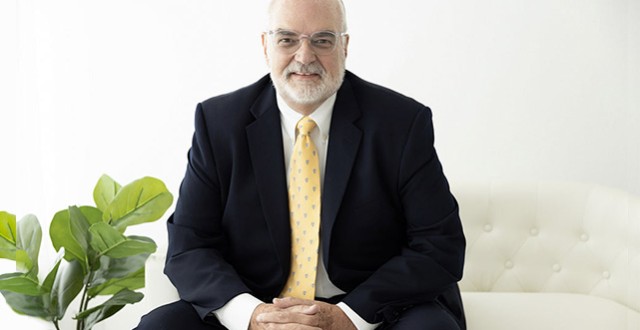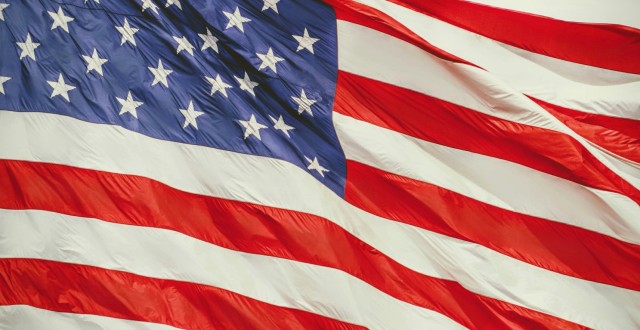
- Mediation
- Arbitration
- Court Neutrals
- Online Dispute Resolution
- Technology
- Court Decisions
- More
- Legislation
- Healthcare
- Guest Posts
- John DeGroote
- John C. Fleming
- Rick Freeman
- Professor Peter Friedman
- Honorable W. Royal Furgeson, Jr.
- James M. Gaitis
- Laura A. Kaster
- Professor John Lande
- Philip J. Loree, Jr.
- Michael McIlwrath
- F. Peter Phillips
- Professor Alan Scott Rau
- Professor Thomas J. Stipanowich
- Professor S.I. Strong
- Richard Webb
- Glen M. Wilkerson
- International arbitration
- Regulation
- Sports and Entertainment
- We’re Back!!!!Well, it’s been a while since we published and that is about to change. Since I spent much of last year becoming
 JAMS Welcomes Karl Bayer to its Panel of NeutralsJAMS, the world’s largest private alternative dispute resolution (ADR) provider, is pleased to announce that Karl Bayer
JAMS Welcomes Karl Bayer to its Panel of NeutralsJAMS, the world’s largest private alternative dispute resolution (ADR) provider, is pleased to announce that Karl Bayer Class Action Waivers in Arbitration Agreements: The Twenty-First Century Arbitration Battleground and Implications for the EU CountriesLinda S. Mullenix, Morris & Rita Atlas Chair in Advocacy at the University of Texas School of Law, has written “Class Ac
Class Action Waivers in Arbitration Agreements: The Twenty-First Century Arbitration Battleground and Implications for the EU CountriesLinda S. Mullenix, Morris & Rita Atlas Chair in Advocacy at the University of Texas School of Law, has written “Class Ac Picking the Proper Technological Tool for Problem-Solving in ArbitrationProfessor Amy J. Schmitz, John Deaver Drinko-Baker & Hostetler Chair in Law and Co-Director of the Translational Data An
Picking the Proper Technological Tool for Problem-Solving in ArbitrationProfessor Amy J. Schmitz, John Deaver Drinko-Baker & Hostetler Chair in Law and Co-Director of the Translational Data An
Recent Posts
CPR Institute | 29th Annual Awards for Outstanding Scholarship in ADR
On January 11, the International Institute for Conflict Prevention & Resolution (“CPR Institute”) had its annual awards in New York. This year, the awards were presented to: ADR Center in Italy, co-founded by Giuseppe De Palo and Leonardo D’Urso. Award: Outstanding Practical Achievement. Roselle L. Wissler for her work, “Court-Connected Settlement Procedures: Mediation and Judicial Settlement Conferences” 26 Ohio St. J. on D.R. 271-326 (2011). Award: Outstanding Original Professional Article. S.I. Strong for her work, “Collective Arbitration Under the DIS Supplementary Rules for Corporate Law Disputes: A European Form of Class Arbitration?” 29 ASA Bulletin 145 (2011). Award: Outstanding Original Short Article. Professor S.I. Strong is one of our blog contributors at Disputing. Other articles by S.I. Strong can be found here. Michael Diamond for his work, “’Energized’ Negotiations: Mediating Disputes Over the Siting of Interstate Electronic Transmission Lines” 26 Ohio St. J. on D. R. 1, 217 (2011), and Nate Mealy for his work, “Mediation’s Potential Role in International Cultural Property Disputes” 26 Ohio St. J. on D.R. 1, 169 (2011). Award: Outstanding Original Student Article. Douglas E. Noll, author of Elusive Peace: How Modern Diplomatic Strategies Could Better Resolve World Conflicts, Prometheus Books, Amherst, NY (2011). Award: Outstanding Book. Kluwer Arbitration Blog, http://Kluwerarbitrationblog.com/. Award: Outstanding Electronic Media About ADR. Read the CPR Institute press release here.
Continue reading...GUEST-POST | Definitive Creative Impasse-Breaking Techniques in Mediation: Sausage Making Laid Bare
This is my second post giving you a tease from one or more chapter in Definitive Creative Impasse-Breaking Techniques in Mediation, Molly Klapper, J.D., Ph.D. (NYSBA 2011). Find the first post here. Today, I would like to focus on Simeon Baum’s “Sausage Making Laid Bare.” Simeon Baum is a leading NY mediator and former chair of the NYSBA’s Dispute Resolution Section. He actually contributed two separate chapters to the book and has the literal last word. His final chapter is about using the philosophy of the Toa-te Ching in mediation. He describes the philosophy as non-doing, a calming listening presence, not using a particular technique but truly staying tuned. It should be read in full by all mediators since, as he recognizes, a tool box is a wonderful resource, but in the end the mediator must have integrated something more ineffable that allows the mediator to peacefully accept the parties and inspire their trust.[i] That final chapter, “The Technique of No Technique,” points to the need for assimilation, and self-knowledge that leads to proficiency and calm. In “Sausage Making”, Simeon generously provides a concrete method for dealing with multiparty-finger-pointing disputes. He calls this the consensus-based-risk-allocation model. It not only provides a road map for resolution but effectively uses the “wisdom of crowds” as its own solution.[ii] In three sets of caucuses Simeon asks and records each of the multiple defendants’ answers to three questions: (1.) What is the likelihood the plaintiff will win at trial, and if so how much? (2.) What percentage liability will be allocated to each defendant? (3.) How much will it cost to try this case? Having discussed risk analysis with each defendant, he records the answers on an Excel spread sheets (templates are provided). He then works with the average amount plaintiff is predicted to win multiplied by the average likelihood of success to obtain the risk assessed damages. He uses the total cost of defense (cumulatively) or if there are wide discrepancies, he can average the estimates and multiply by the number of defendants. He then calculates each defendant’s share of the settlement pot based on the defendants total predictions. This framework helps Simeon to calculate the group’s assessment of risk and to apply it to costs and the potential range of recovery and to create three graduated pots for offers to the plaintiff based on the collective thinking. How Simeon gets buy-in, develops the pots, and the templates he uses are by themselves worth the price of the book for any mediator who faces a multiparty dispute. Laura A. Kaster is a mediator and arbitrator in Princeton, New Jersey, working in the wider NY metropolitan area. She is the Chair of the NJSBA Dispute Resolution Section and Co-editor in Chief of the NYSBA’s Dispute Resolution Lawyer. She is a CEDR Accredited and IMI certified mediator and an adjunct professor at Seton Hall Law School and regularly presents for the NJSBA, NYSBA, ABA and PLI. From 1997–2006 Chief Litigation Counsel for AT&T Corporation. Until 1997 she was a partner in the Chicago law firm of Jenner & Block. From 1973 to 1975 she was law clerk to Judge Frank M. Coffin of the U.S. Court of Appeals for the First Circuit. More information is available at http://www.AppropriateDisputeSolutions.com. [i] I was fortunate to shadow Simeon during my early mediation work and what most impressed me was the fact that without saying much, each of the parties thought he supported them. He also gave me, as he has given many, my own copy of the Tao te-Ching. [ii] James Surowicki, The Wisdom of Crowds: Why the Many are Smarter Than the Few and How Collective Wisdom Shapes Business, Economics, Societies and Nations (Anchor 2004).
Continue reading...NYSBA: Best Practices In E-Discovery In New York State and Federal Courts
The New York State Bar Association issued a couple of months ago a report entitled, “Best Practices in E-Discovery in New York State and Federal Courts.” The report contains guidelines intended to provide New York practitioners with practical, concise advice in managing e-discovery issues in both state and federal courts in New York, and to be a reference for best practices in e-discovery based on the current state of the law -but can certainly be useful in other jurisdictions. You may download the Guidelines here.
Continue reading...How Did US Healthcare Get Linked to Employment?
By Holly Hayes In the 19th century, hospitals were shelters for the sick or dying supported by churches or other religious institutions. By the 20th century, medical care was more advanced and more expensive. Hospital administrators began to search for ways to pay for ever advancing costly medical procedures. Marc Bard and Mike Nugent in their book Accountable Care Organizations, Your Guide to Strategy, Design, and Implementation, write about the birth of the US healthcare system. Rather than a well-thought out business, the US healthcare system was more a series of accidents. In the middle of World War II, most of the labor force was in the military, leaving businesses with few job applicants and no choice but to compete by raising salaries. The Roosevelt administration sought to control salary inflation by instituting a national wage control — with one loophole – fringe benefits were exempt from the wage controls. Health plans emerged as a way to recruit employees. In 1943, the IRS ruled that these health benefits were exempt from income taxes. South Africa is one of the few other countries that links healthcare coverage to employment. Healthcare insurance had its birth when “An official at Baylor University Hospital in Dallas noticed that Americans, on average, were spending more on cosmetics than on medical care. ‘We spend a dollar or so at a time for cosmetics and do not notice the high cost,’ he said. ‘The ribbon-counter clerk can pay 50 cents, 75 cents or $1 a month, yet it would take about 20 years to set aside [money for] a large hospital bill.” (Read more here) At its beginning, a monthly payment of 50 cents a month could be exchanged for 21 days of free care at the hospital. The plan was marketed to teachers who signed up in masses. A PBR timeline of historical events in heatlhcare can be seen here. In 1950, healthcare was 4.5% of GNP, in 2011, it was 17% of GNP. Lacking a healthcare system that imposes its own cost controls, accountable care organizations (ACOs) offer a new idea for controlling costs while improving patient care. In a series of posts, we will explore the components of the development of a successful ACO. For previous posts on the development of ACOs, see here, here and here. Technorati Tags: Healthcare Holly Hayes is a mediator at Karl Bayer, Dispute Resolution Expert where she focuses on mediation of health care disputes. Holly holds a B.A. from Southern Methodist University and a Masters in Health Administration from Duke University. She can be reached at holly@karlbayer.com.
Continue reading...Arbitration
Mediation
Healthcare Disputes
Legal Research
About Disputing
Disputing is published by Karl Bayer, a dispute resolution expert based in Austin, Texas. Articles published on Disputing aim to provide original insight and commentary around issues related to arbitration, mediation and the alternative dispute resolution industry.
To learn more about Karl and his team, or to schedule a mediation or arbitration with Karl’s live scheduling calendar, visit www.karlbayer.com.






